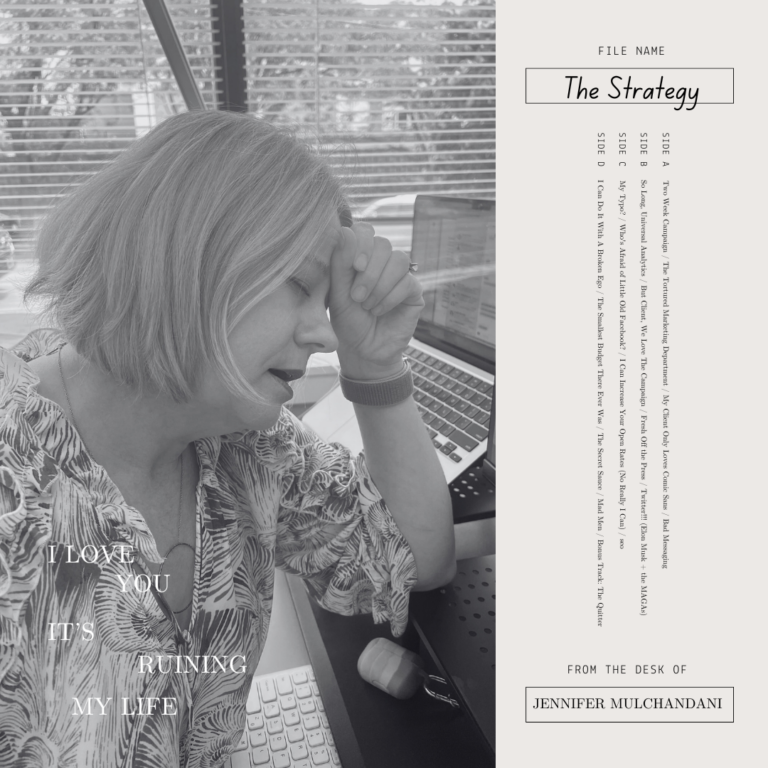 In marketing, the phrase ‘content is king’ is commonplace. What this means for email marketing is that it isn’t enough to just send any old email to your audience, you have to be thoughtful with your content strategy.
In marketing, the phrase ‘content is king’ is commonplace. What this means for email marketing is that it isn’t enough to just send any old email to your audience, you have to be thoughtful with your content strategy.
In the first post of this series, we talked about the basics of getting started with email marketing. If you are new to this tactic, start there. This blog post will help you with planning and organizing your content so that your email campaigns are more strategic (and impactful!)
As we often say, the blank page is daunting. To overcome that, use a process that breaks down the task into easier steps. At Arlington Strategy, we approach email content strategy this way:
- Be clear about your goal (start with the end in mind)
- Define the audience you are writing for
- Gather and organize your content into an editorial calendar
- Write your subject line based on your email content
- Check your analytics to see how your content strategy is working
For in-depth details on each step, read below:
Step 1: What is Your Goal?
Is your campaign to nurture your leads? This goal will require a series of communications that educate, engage, and lead your audience to action.
Or is your goal to drive sign-ups for an event? This might require a number of short communications in a shorter window to drive action.
Or are you using email to demonstrate thought leadership and support your brand awareness? This goal might need a monthly or bi-monthly, or weekly newsletter.
Step 2: Define Your Audience
The first step in content creation is defining your audience. In fact, everything in Mailchimp is one audience at a time. So how do you analyze and categorize people?
First, you look at your current customer base. You can find these in Mailchimp or on analytics sites like Google or Facebook. Once you find them, you can analyze common demographics — do you see a certain trend with age, gender, location, profession, etc.? This influences your research to determine what kind of content to share and when to share it.
Then, you identify your own market share. This assesses where you stand in your own industry. What makes your business unique? What can you provide your audience that others cannot?
At the same time, make sure you analyze your competitors. What do they already provide? What techniques do they use? What do they do well (or not well)? Make sure you aren’t copying exactly what they do, but use them as inspiration to fill in the gaps that they leave.
After analyzing yourself and your audience, you can decide what type of email marketing to send them.
Promotions
- If you sell products or services, promote them through weekly communications with deals, offers, and updates.
Unique Content
- You can provide thought leadership, which highlights your own expertise in your industry. This should be sent at least monthly and can be weekly if it’s truly value-added.
Resources
- You can provide resources from others in the industry and add your own expertise. This is related to unique content and can be sent at the same rate.
Step 3: Gather and Organize Your Content
Now that you know what your audience wants, you can collect and organize it all.
The best way to start is by creating an editorial calendar. This way, you can keep track of all campaigns in one space. For more tips on how to create an editorial calendar and links to templates, click here.
For your calendar, it is best to start BIG PICTURE and map out the year:
- Brainstorm Themes for 6-12 Months
- Layer in Important Dates
- Registration Season
- Holiday Marketing
- Inventory Dates
- Industry Dates/Seasons
- Schools — Semesters, Holiday Breaks, Summer Vacations
Once you have this broad view, then you can GET FOCUSED and map out a specific month at a time. It is best to choose the month’s main theme from the broader calendar and use this as a guide. This way, your messaging across all communication channels — your blog, social media, in-store signage, email marketing, ads, and more — is coordinated. Content and assets can be created and utilized in multiple spaces for efficiency and consistency.
When coming up with your content ideas, it is important to overcome the “blank page.” It can be intimidating, but remember these brainstorming tips:
- NO EDITING — let all of your ideas flow on the page, they can be deleted later
- Use Bullet Points — keep things brief and organized this way
- Map Out Theme Ideas — keeping things on a theme can make it easier
- And Utilize Your Research — identify what content you can provide and how this can translate on different communications mediums while remaining on-brand
Here are some content strategy examples:

Content inspiration can also depend on what you want to provide your audience:

When putting your content specifically into your email marketing campaign, it is important to prioritize:
- Layout
- It is best to lay out your content from the most important at the top to the least important at the bottom. This creates a hierarchy so that your audience will see the essential information, even if they stop reading part-way through
- Keeping It Concise
- This ensures that your recipients can easily read and digest your email marketing, making it useful to them. You can achieve this by breaking information up into smaller sections, linking out to resources, or even creating an email campaign series if you have too much information for one email.
- Having a Balance
- Utilize headings, images, bullets, paragraphs, etc., to create diversity and balance throughout your email campaign. This also makes it easier for your recipients to read and digest information.
- Having a Focused Topic/Theme
- Make sure your email campaign isn’t trying to cover too much in a single email — keep it focused on a single topic or theme throughout. Again, if you have too much information, you can create an email campaign series.
Step 4: Writing Your Email Marketing Subject Line
Now that you have all of your content for your email campaign, it’s time to write the subject line — what your audience will see to get them to open the email.
For this, make sure you:
- Keep It Concise
- An email inbox does not offer room for lengthy subject lines. Six to ten words are recommended, but less is fine if it’s attention-grabbing.
- Offer an Incentive
- What do they get for opening your email? If you’re offering a discount, download, event, or something else, consider having this in your subject line. Utilize your customer research to see what your recipients would be interested in.
- Create Urgency
- Why do they need to open your email? Is there something timely or interesting to see? Again, utilize your customer research to provide something of interest in your subject line.
- Avoid Spam-Trigger Words
- There are words that can have a negative effect if used in your subject line. They’re triggers for spam emailers, so make sure to avoid them just in case your email is flagged as spam:
- “Offer”
- “Winner”
- “Free sample”
- “Special promotion”
- “While supplies last”
- There are words that can have a negative effect if used in your subject line. They’re triggers for spam emailers, so make sure to avoid them just in case your email is flagged as spam:
- Try Something Creative
- Add in a relevant emoji or utilize capitalization or punctuation. You do not need to overdo it, but having something eye-catching will make your email stand out in your recipients’ inboxes.
In email marketing services like Mailchimp, you can also add preview text, which adds a little more detail and context to your subject line. We recommend keeping this around the same length and treating it as a subheader of sorts.
Step 5: How Do You Know If Your Content Strategy Is Working?
How do you know if the content in your email marketing campaign is successful?
Email marketing services like Mailchimp offer analytics, where you can either look at your campaigns’ performances from a certain time period or look at the reports of specific campaign performance to see things like the click and open rate. Learn how to use Mailchimp analytics here.
If you would like to know more about email marketing, stay tuned for our next blog post on advanced skills!



